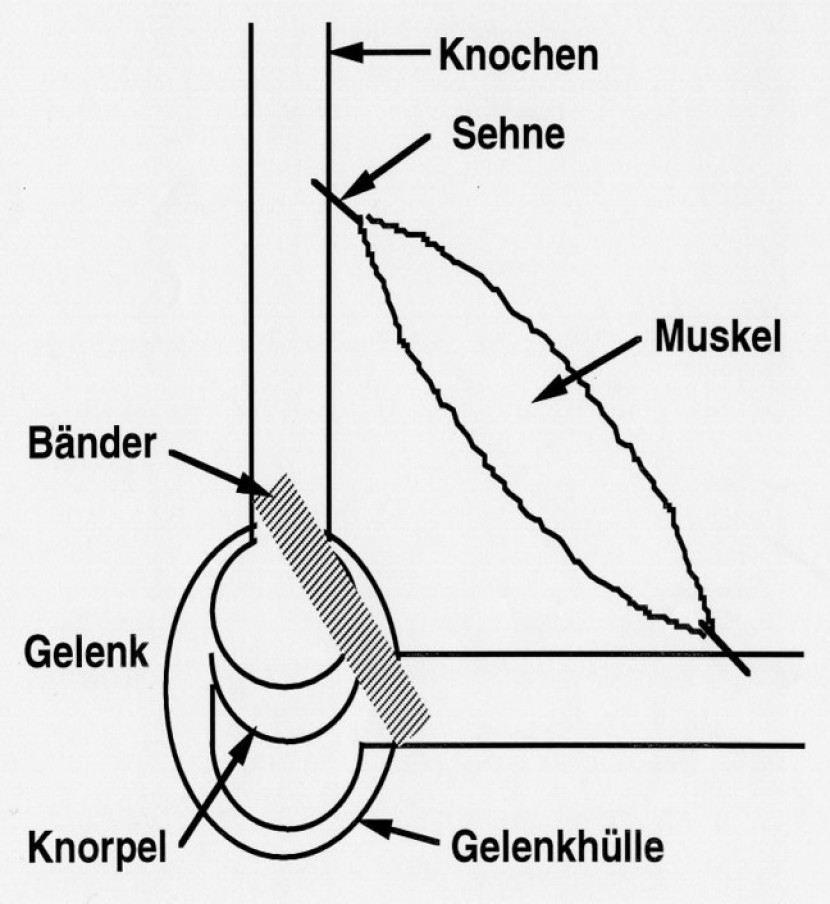Biological basics
In everyday life and especially during sporting activities, all organs and organ systems must work together optimally with the muscles:
the control and regulatory systems are in charge;
the metabolic systems are responsible for construction and maintenance as well as energy supply;
the respiratory system is responsible for gas exchange;
the heart supplies all organs with blood or oxygen and nutrients via the vascular system;
the digestive system makes the ingested nutrients available for the metabolism;
the filtration and excretion systems eliminate the degradation products of the metabolism;
the immune system recognises foreign substances and renders them harmless.
The movement and support system consists of passive and active structures. The passive part consists of connective and supporting tissue: bone and cartilage structures, tendons and ligaments as well as bursae and tendon sheaths. The muscles form the active part. Each muscle fibre is connected to the central nervous system via a motor nerve fibre and forms part of the neuromuscular system.

The bones and everything connected to them are moved. The extent of a movement depends on the mobility of the bone connections involved, the joints. Strength is required for every movement. The muscle, as the active part of the musculoskeletal system, is the only force-producing organ that has the ability to contract, i.e. to contract. Muscle contraction is triggered and controlled by the nervous system.
The movement and support system fulfils numerous tasks:
enabling posture and movement and giving the body shape and stability;
protects the central nervous system (brain and spinal cord) as well as the sensory organs and internal organs;
enables breathing;
calcium storage by the bones surrounding the bone marrow, which produces blood cells;
maintaining the optimum operating temperature through the muscles, which produce heat.
The active and passive structures are able to adapt to the demands placed on them. However, these adaptations take place at different speeds, with the passive system generally requiring more time to adapt. Furthermore, the active and passive structures quickly lose substance when there is a lack of strain. The different adaptation times and possible losses of substance (e.g. due to an injury-related break) must be taken into account when planning training.
More info: